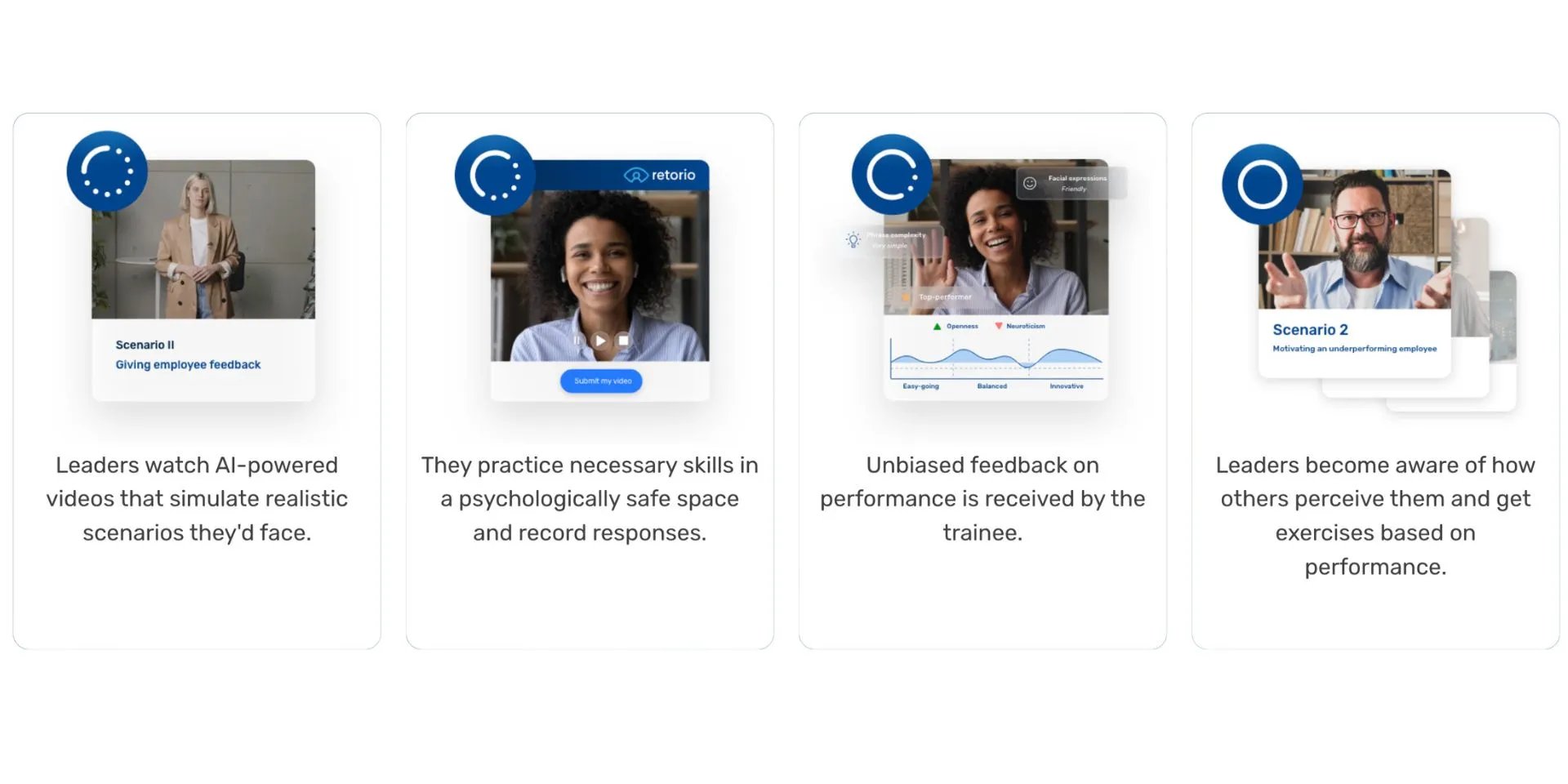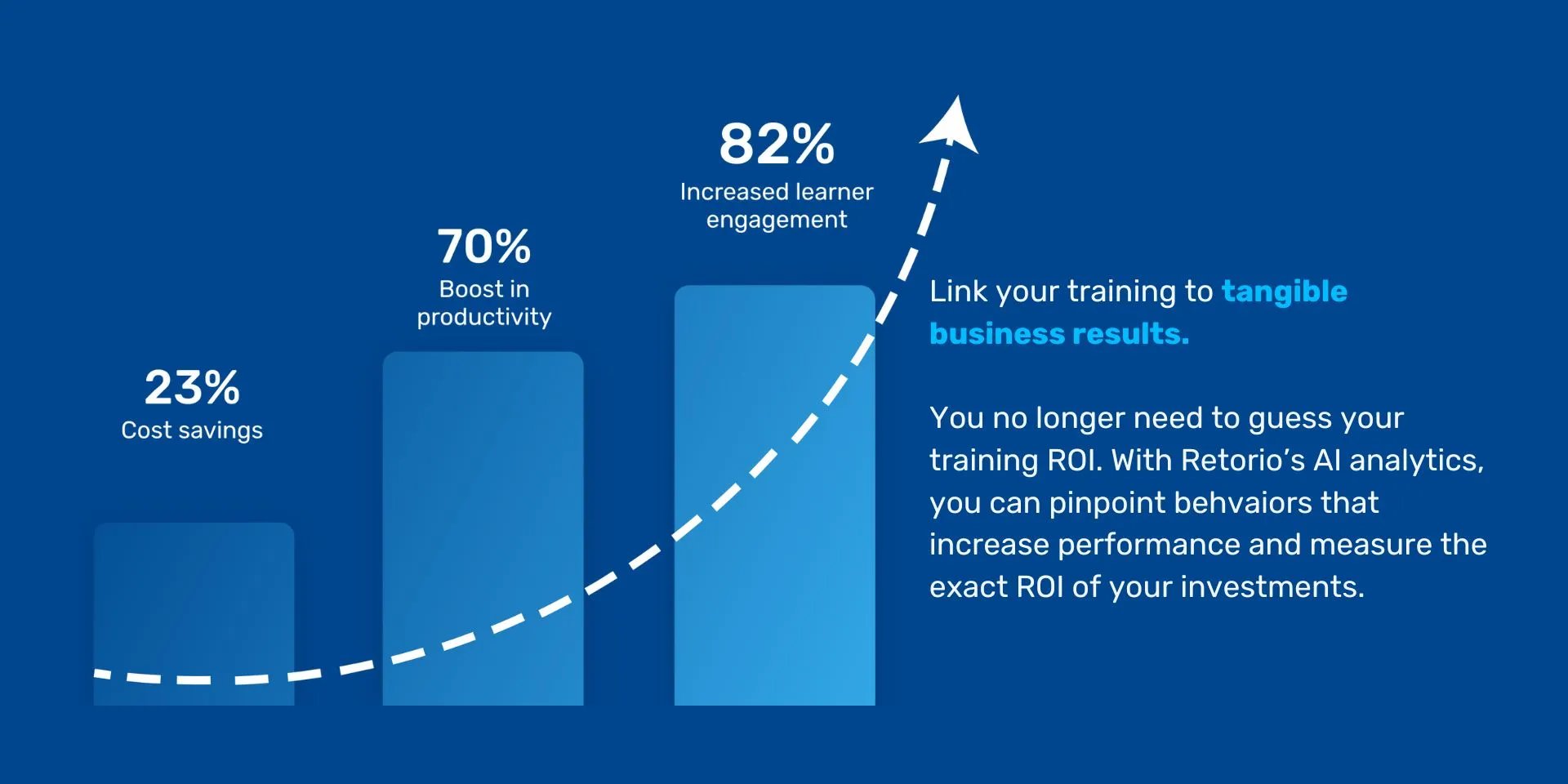The leadership training and development global industry is currently worth $366 billion [1]
Moreover, those who underwent leadership training have improved their performance by 20% and their learning capacity by 25% [2]
At its core, leadership is having a deeper understanding of how one's leadership style can continuously propel an organization toward success. That said, developing strong leaders is essential for having a reliable compass that will successfully navigate your organization through challenges and inspire your teams.
However, leadership development does not have an end. Gaining a competitive advantage and bringing about organisational transformation lies in your company's ability to continuously equip your leaders with the skills and competencies needed to lead with visions and impact.
What's in this post:
What is an executive leadership training program?
Executive leadership training programs are designed to empower senior executives with the necessary skills, competencies, and strategies needed to efficiently navigate the complexities of today's business landscape, and guide their organization toward sustainable success.
These development programs encompass a blend of immersive learning experiences, on-the-job training methods, and personal leadership development exercises such as strategic thinking, effective communication, active listening, and ethical leadership.
Throughout the training program, executive leaders gain further knowledge about the latest industry trends, and new best practices that will help them to navigate real-world business challenges while simultaneously putting their new leadership skills into practice.
You may also be interested in what leadership and management training is all about and its benefits.

What are the executive leadership skills?
From strategic decision-making to delegating tasks, there are several important skills that every executive leader should develop and improve on to inspire, innovate, and drive growth for their organization.
Here are some of the most important skills for executive leadership:
-
Emotional intelligence: An emotionally intelligent leader has a strong sense of self-awareness and can understand the emotions of their team members as well as their own. This helps them to manage business and personal relationships effectively and build a stronger foundation of trust with their teams and clients. It is a high-value soft skill that sets good leaders apart from the rest.
Fact: Organizations that prioritize the development of emotional intelligence in their training are 3.2x more effective at leadership development. [3]
-
Strategic thinking and decision-making: An executive leader should be ready to face complex situations, identify opportunities and threats, and make sound choices for the future of their organization. For example, an executive leader with strong strategic thinking skills can analyze market trends, competitor actions, and internal capabilities to develop a plan for entering a new market and ensuring that the company is well-positioned for sustainable success.
-
Communication: As simple of a skill as it is, it is sometimes overlooked by executive leaders. Good communication skills go a long way. For effective leadership to take place, executive leaders should be able to clearly articulate the company's vision and development goals in a way that generates excitement and alignment across teams.
-
Active listening: It should be a goal for every C-level executive to become a world-class listener. Developing and nurturing this skill allows your leaders to remain open to understanding their team member's perspectives, concerns, and needs. This helps them to build trust and rapport with employees and stakeholders. A leader that does not listen to people in their own organization
-
Problem-solving: When it comes to issues and roadblocks, an executive leader sometimes has to step in to help their team resolve complex problems effectively. Having this skill polished and refined within your leaders minimizes the risk of disruptions and ensures smooth operations within teams.
-
Motivation: How are your leaders motivating their team to drive towards success and achieve goals? Training executive leaders to recognize and reward individual and team achievements, and celebrate successes is vital in boosting morale and driving employee engagement and retention
-
Delegation: Executive leaders with strong delegation skills can effectively utilize the strengths and talents of their team members to reach high performance and produce high-quality work. This enhances productivity levels within the company and empowers employees to take ownership of their responsibilities and tasks.
-
Digital literacy: An executive leadership program trains leaders to stay updated on the latest industry trends and new technologies that will help your company drive growth and innovation, optimize operations, and improve overall efficiency. Leaders with this skill will be able to understand and strategically leverage modern technology to utilize data and gain valuable insights.
You may also be interested in the leadership soft skills for success in 2024.

Developing an executive leadership training program does not have to be as complicated as it may sound. However, it is also not just about ticking boxes; it's about building a tailored training program that addresses the specific needs and skill gaps of each leader.
Here are a few tips on how you can ensure that your executive leadership training will improve your organization's success:
Establish and identify training needs:
Companies that deliver personalized training plans to employees experience 17% more productivity, and 21% more profitability [4].
To achieve this, you can conduct a training needs analysis to identify the learning and skill gaps within your leaders. Some leaders may excel in their communication but lack delegation skills, while another leader struggles to problem solve but is fluent in digital literacy. Therefore, to transform your leaders into their best selves, it is important to provide training content that is catered to your leader's knowledge/skill gap to help them thrive in their role.
Define measurable training objectives
What does success for your company look like? What does a successful leader look like to you? These are the questions that are crucial to reflect on before you start developing a training programme. Focus on your business outcomes and how you picture your leaders helping you to achieve them. From there, set SMART (Specific, Measurable, Achievable, Realistic, and Time-bound) goals that define the key leadership skills and competencies you want to develop.
Align training with culture
Ever wondered why you don't see a great return on your training and development initiatives? This can be because your training programs are not aligned with your company's values, goals, and culture. Make sure that your training programs resonate with your organization's core values and cultivate behaviors that reinforce your desired organizational culture and outcome.
💡Extra Tip: Make sure that when building your training programs, a clear way to measure improvements in organizational performance can be measured.
Focus on real-world applications
When it comes to workplace training, there comes a point where people get tired of spending hours consuming content that they will most likely forget within a few days. That said, implementing immersive training experiences allows your leaders to gain practice knowledge that will translate directly into tangible skills that your leaders can put straight into action.
Introduce real-life scenarios within training programs that reflect on the challenges that they have to overcome in their daily tasks. Not only will this train them to tackle issues in real time, but it will also prepare them to face the next challenges efficiently and professionally.
Create a supportive training environment
There is one important pillar when it comes to creating a supportive and positive training environment: Psychological safety.
When training leaders to active their best selves (and any training in general), it is vital that every trainee can improve on their performance in a safe space that is free of judgment.
So when it comes to executive leadership training, ensure that your training encourages open communication and collaboration to create a safe and productive safe for learning and vulnerability.
When it comes to individual coaching sessions, offer personalized coaching and mentoring sessions that will address the individual needs of your leader and bridge their unique skill gaps.
Measure and refine
One of the most crucial parts of developing an executive leadership training program is to collect feedback. Feedback is what will tell you exactly what you are doing right and what is stopping your leaders from succeeding with the training.
That said, once your leader has completed training, ask them for their insights and feedback to measure effectiveness and identify areas for improvement. Learn from your mistakes and become better at your strengths.
Extra notes:
-
You can also track progress by using pre-and post-training assessments to gauge skill development and the impact it plays on your overall organizational performance.
-
By regularly reviewing your training program, you will be able to continuously adapt it to current needs and emerging trends to always stay ahead of the curve and at the forefront of leadership development.

Benefits of executive leadership training
Below are some of the key benefits of implementing an executive leadership training program in your organization. However, the specific benefits will vary depending on your organization's objectives, and unique needs.
| Increased productivity | Having executives with a strong set of skills means that they can make better-informed decisions, delegate effectively, and successfully motivate their teams. This also helps to reduce the risk of reoccurring errors due to clearer communication and strategic direction. |
| Enhanced innovation | Strong leadership builds a culture of creativity and risk-taking. Executives who undergo training will be able to think outside the box, challenge new ideas, and develop new products or services that embrace digital transformation and improve efficiency. |
| Improved talent acquisition and retention | Having a strong leadership culture helps your organization automatically attract and retain top talent, reduce unnecessary recruitment costs, and boost employee engagement. |
| Stronger financial performance | Effective executive leadership translates to better decision-making, stronger customer relationships, and improved risk management, leading to financial success. Executives will also be able to negotiate better deals, optimize resources, and navigate market shifts more efficiently. |
| Enhanced brand reputation | Having executive leadership training that integrates ethical and responsible leadership practices builds trust with stakeholders and improves brand perception for clients and customers. |
| Stronger succession planning | Implementing personalized leadership training programs allows companies to identify high-potential employees who have strong leadership potential. It also internally ensures a smooth transition and future-proofs the organization. |
| Competitive advantage | Having well-trained executives who are ready to adapt to change, seize opportunities, and find strategic solutions to obstacles will be the ones who lead your company to gain a stronger competitive edge. These will also be the same leaders who become skilled at anticipating industry trends. |
You may also be interested in the 10 work performance improvement examples for managers.
Transform your leader's potential and empower their growth with Retorio's AI coaching platform.
Imagine recognizing and nurturing the leadership potential within your existing team. Mentorship programs can help you do just that by identifying talents, fostering their growth, and equipping them with the tools to succeed. But what if you could accelerate this process, creating strong leaders in a fraction of the time?
That's where Retorio's AI-powered leadership training platform comes in.
By leveraging behavioral intelligence and cutting-edge AI simulations, Retorio provides a personalized and immersive learning experience for your senior leaders.

Forget passive lectures and static training modules. Retorio throws your leaders into the thick of it with interactive, video-based simulations that mimic real-life scenarios. Whether it's honing communication skills during a delicate negotiation or tackling complex problem-solving under pressure, your leaders gain immediate, practical experience.
But it doesn't stop there. Retorio's AI goes beyond simulating scenarios. It analyzes your leaders' responses, providing data-driven insights and personalized feedback on their strengths, weaknesses, and areas for improvement. This self-reflection, coupled with actionable feedback, fuels meaningful growth and development.
Retorio's benefits:
- Identify and cultivate hidden talent within your organization.
- Spark self-reflection and empower personal growth through personalized feedback.
- Gain data-driven insights to track progress and measure the impact of your training.
It is time to not settle for slow, traditional leadership training. Especially in this fast-paced business environment. Make training an opportunity rather than a distraction with Retorio.
- Self-Leadership:
- Focus: Understanding your strengths, weaknesses, values, and motivations.
- Importance: Sets the foundation for effective relationships and authentic leadership.
- Actionable examples: Practicing self-awareness, self-reflection, and emotional intelligence.
- Relationship-Building:
- Focus: Building trust, respect, and positive connections with individuals and teams.
- Importance: Fosters collaboration, communication, and motivation within the organization.
- Actionable examples: Practicing active listening, empathy, and open communication.
- Strategic Vision & Execution:
- Focus: Setting clear goals, developing effective strategies, and driving execution.
- Importance: Provides direction and focus, ensuring resources are utilized effectively.
- Actionable examples: Conducting thorough analysis, communicating vision clearly, and measuring progress toward goals.
While both senior and executive leaders play crucial roles, they differ in scope and focus. Senior leaders excel at executing strategies within their specific departments, driving performance, and motivating teams. Executive leadership, on the other hand, operates at a higher level, setting the overall vision, making strategic decisions, and navigating long-term challenges that impact the entire organization. Think of it as "doing" vs. "thinking" – senior leaders excel at the former, while executive leadership steers the ship with the latter.




